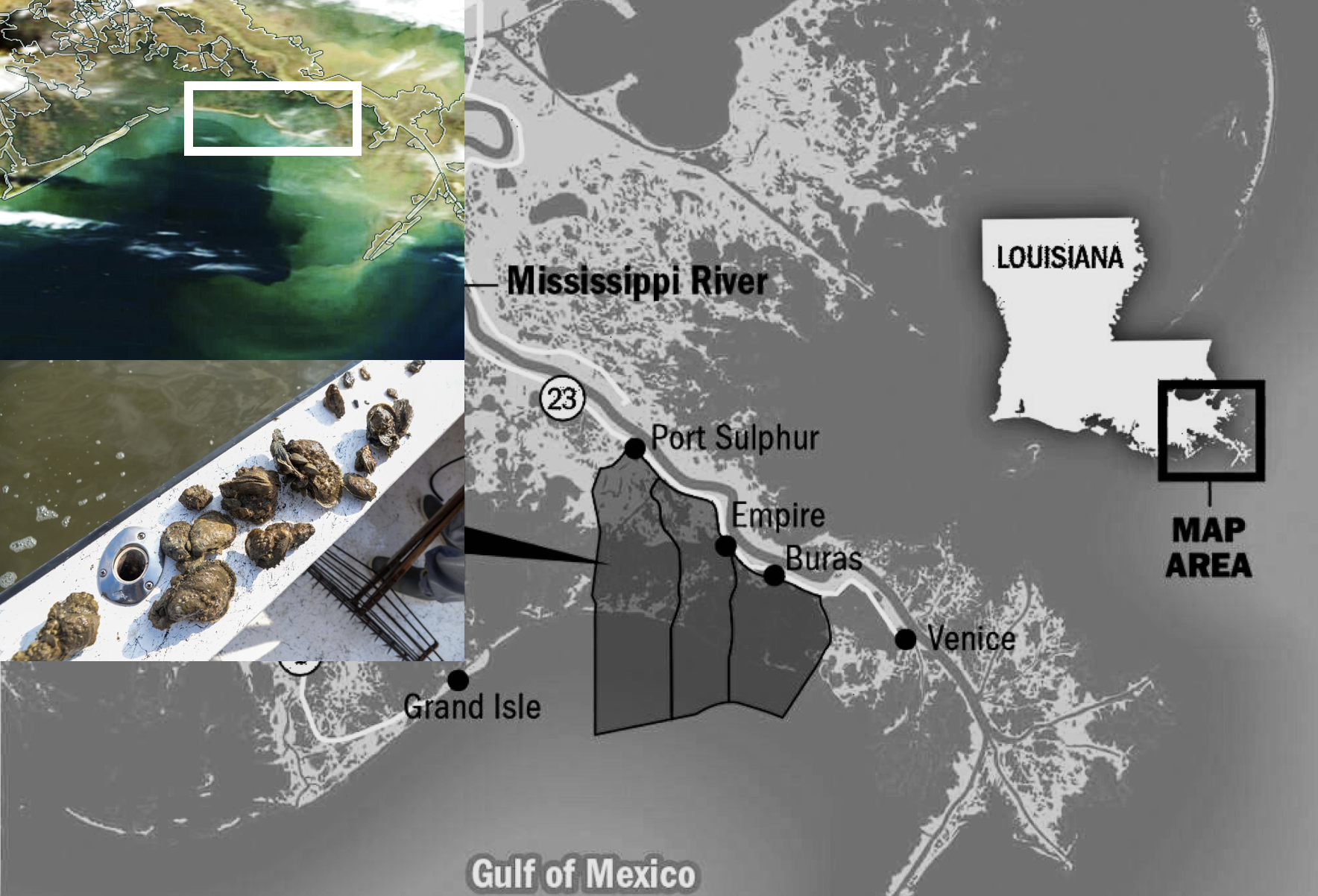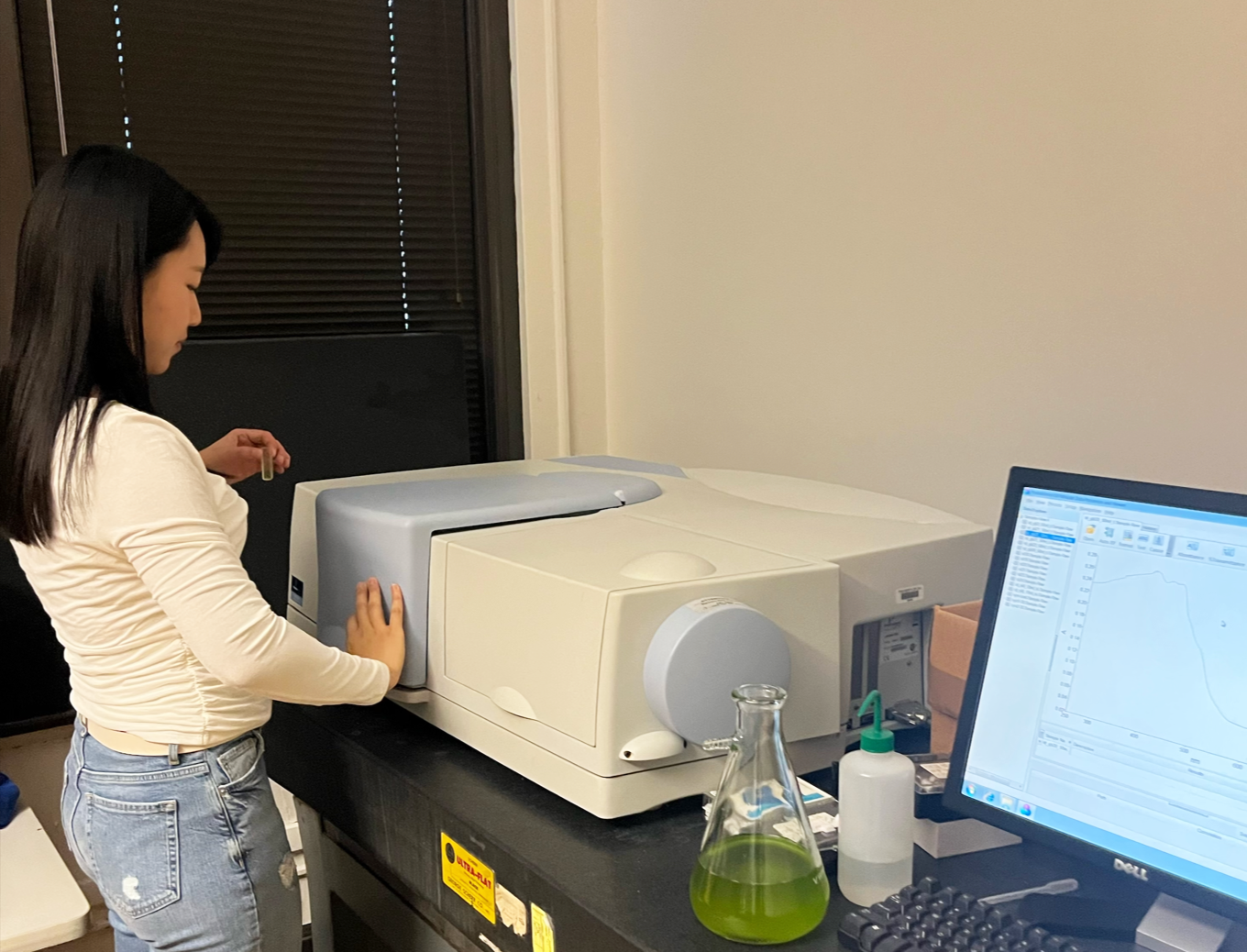Early Adopter

School of Geosciences, University of Louisiana at Lafayette
Applied Research Topic
Potential Applications ► Harmful algal bloom identification and forecasting
Description
The Louisiana coastal ecosystem, including the estuarine and coastal waters with the related aquatic and terrestrial biota are expected to experience habitat alterations due to anthropogenic modifications and are increasingly vulnerable to the impacts of climate change. The Mississippi and Atchafalaya Rivers drain approximately 40% of the contiguous U.S. and deliver massive nutrient-rich and sediment-laden freshwater into coastal Louisiana, leading to eutrophication, high standing stocks of phytoplankton and reoccurrence of bottom-water hypoxia in this region. Meanwhile, coastal restoration actions, such as existing freshwater and proposed sediment diversions in various Louisiana estuaries, exerts significant influence on phytoplankton biomass and taxa, producing episodic harmful algal bloom (HAB) events. Furthermore, regional warming at a rate of 0.016 °C yr−1 along with changes in carbon chemistry and pH can alter phytoplankton community composition, promoting the proliferation of HAB species and further modifying the food webs. Little information is available about how these estuarine and coastal water quality conditions (e.g., HABs and hypoxia) in Louisiana are likely to change in responding to changing climate and restoration activities.
The project objective is to develop actionable science to understand how the water quality conditions (i.e., HAB and hypoxia risks) of estuaries in Louisiana are likely to change in a warmer future to help coastal managers make decisions about natural resources and restoration practices. We will integrate bio-optical data, including existing field measurements of inherent optical properties (IOPs) and concentration metrics as well as hyperspectral data to derive phytoplankton functional groups (e.g., diatoms, cyanobacteria, and chlorophytes) from PACE using machine learning techniques to further inform downscaled historical and projected solutions of coupled-physical-biogeochemical model configured for coastal Louisiana.
Significance
The societal relevance of our research lies in its profound impact on environmental and public health, policy formulation, and decision-making processes in the context of coastal Louisiana. Enhanced climate change awareness, resilience and adaptation capacity will occur by working closely with the state managers to help inform their management-related decisions and documents (plans, inventory reports) so they can help prepare for potential water quality condition changes in the waters they manage. Harmful algal blooms pose a significant threat to aquatic ecosystems and human health. These blooms can affect water quality and pose risks to the health of marine life and coastal communities. Our research endeavors to predict and understand the spatial and temporal patterns of PACE-derived phytoplankton functional groups, potentially HABs, providing critical insights into the occurrence and potential impacts of these harmful events. We aim to support environmental agencies and public health authorities in implementing timely measures to mitigate and manage these events, ultimately safeguarding the well-being of both ecosystems and communities.
Our applied research takes a proactive approach by using future scenario modeling informed by PACE data. This enables us to assess the potential impacts of climate change and environmental stressors on the occurrence and severity of HABs and hypoxia in coastal Louisiana. The outcomes of our modeling efforts can provide valuable information to policymakers, resource managers, and stakeholders, aiding in the formulation of evidence-based policies and management strategies. Understanding the future trajectories of HABs and hypoxia allows for informed decision-making, empowering authorities to implement adaptive measures and prioritize conservation efforts effectively.
Why PACE
The hyperspectral capability of PACE OCI will allow for the acquisition of rich spectral information crucial for simultaneously retrieving multiple biogeochemical variables. By harnessing this capability, researchers can effectively assess aquatic biodiversity, habitats, water quality, and even identify natural and anthropogenic hazards like HABs. Notably, waters containing varying proportions of dominant phytoplankton functional groups, each with distinct absorption and backscattering properties, exhibit characteristic differences in reflectance that PACE data can discern. This distinct advantage enables PACE to provide higher spectral resolution when characterizing phytoplankton groups, surpassing the capabilities of multispectral satellites. Thus, information provided from studies that use PACE will advance the science on HABs, hypoxia, and food webs in coastal Louisiana waters.End User(s)
- Barataria-Terrebonne National Estuary Program (BTNEP)
- Oyster Program Manager at Louisiana Department of Wildlife and Fisheries (LDWF)
- Louisiana Department of Environmental Quality (LDEQ)
- Pontchartrain Conservancy
SAT Partner(s)
Xiaodong ZhangPublications
Liu, B., D'Sa, E. J., Messina, F., Baustian, M. M., Maiti, K., Rivera-Monroy, V., Wei H., Georgiou, I. Y. (2023). Dissolved organic carbon dynamics and fluxes in Mississippi-Atchafalaya deltaic system impacted by an extreme flood event and hurricanes: a multi-satellite approach using Sentinel-2/3 and Landsat-8/9 Data. Frontiers in Marine Science, 10, 1159367.
Liu, B., Sevick, T., Jung, H., Kiskaddon, E., Carruthers, T. (2023) Quantifying the Potential Contribution of Submerged Aquatic Vegetation to Coastal Carbon Capture in a Delta System from Field and Landsat 8/9-Operational Land Imager (OLI) Data with Deep Convolutional Neural Network. Remote Sensing, 15, 3765.
Baustian, M. M., Liu, B., Moss, L. C., Dausman, A., & Pahl, J. W. (2023). Climate change mitigation potential of Louisiana's coastal area: Current estimates and future projections. Ecological Applications, 33(4), e2847.
Liu, B., D'Sa, E. J., Maiti, K., Rivera-Monroy, V. H., & Xue, Z. (2021). Biogeographical trends in phytoplankton community size structure using adaptive sentinel 3-OLCI chlorophyll a and spectral empirical orthogonal functions in the estuarine-shelf waters of the northern Gulf of Mexico. Remote Sensing of Environment, 252, 112154.
Liu, B., D'Sa, E. J., & Joshi, I. D. (2019). Floodwater impact on Galveston Bay phytoplankton taxonomy, pigment composition and photo-physiological state following Hurricane Harvey from field and ocean color (Sentinel-3A OLCI) observations. Biogeosciences, 16(9), 1975-2001.




